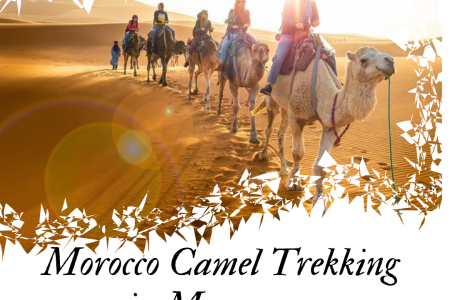Tips for traveling to Morocco: security and customs
Travel tips in Morocco
Morocco is one of the most visited countries in Africa and a very popular destination for Spanish travelers due to its proximity, good prices and stability. Despite being one of Spain’s neighboring countries, planning a trip to Morocco always raises all kinds of questions and doubts. When is a good time to go to Morocco? What should I know about its customs? How do I move? In this article we will answer all your questions
Security in Morocco
Is Morocco dangerous? Morocco is one of the safest countries in Africa, but this does not detract from the global threat of terrorism that has been active since 2014, according to the Moroccan government itself. As underlined by the Spanish Ministry of Foreign Affairs and Cooperation, the risk areas “are not identified” and it is advisable to be wary of potential thefts due to carelessness and muggings.
Best time to go to Morocco
The best times of the year to visit Morocco are spring and autumn. Morocco’s geography is very diverse, ranging from Mediterranean climates in the north to desert climates in the Sahara and mountainous climates with altitudes of up to 4,000 meters in the Atlas Mountains.
In summer it is common for some cities like Marrakesh to reach 50 degrees Celsius. In winter the areas close to the Atlas Mountains can experience a lot of snow and rain.
You should also factor in Ramadan (different dates each year), as most businesses, such as restaurants and shops, remain closed during the day during fasting hours.
Therefore, April, May and October are the best months to visit Morocco. If you’re only traveling to the north coast, the summer temperatures may be tolerable too, but as soon as you head inland the heat becomes unbearable.
Customs and laws
When visiting Morocco, behavior should be determined by local customs and religion, so as not to offend or even commit a crime.
Take Ramadan into consideration when planning your trip, as visiting during this time can have its advantages and disadvantages. Ramadan takes place on different dates every year. Make sure you do your research when planning your trip.


Getting around in Morocco
Depending on the type of trip you are on, in Morocco you should consider all means of transport, including trains, buses, cars and planes. Trains are a great way to travel in Morocco, as the Alawite country boasts a good rail network connecting major cities. Tangier, Fez, Nador, Rabat, Casablanca and Marrakesh are all connected by train. Morocco’s first high-speed rail line is also now in operation, connecting Tangier and Casablanca in around two hours.
Buses are used to travel to places in Morocco that are not accessible by rail and are the most popular form of transport for locals due to their low prices and high frequency. The CTM company covers practically all destinations in the country.
Cars are a very popular means of transport among tourists to explore villages, beaches, the Atlas Mountains and even the desert. Bringing your car from Spain is a good option due to the advantages it offers. If you decide to rent a car in Morocco, it is important to note that you will find the main international companies. European driving licenses are valid for car rental in Morocco and the traffic rules are very similar.
Driving in Morocco is not as easy as in Spain. Moroccans drive a bit chaotic according to the rules, so be careful and be patient. In terms of roads, the country has new toll highways connecting major cities. Away from them, the driving rules are different, so drive carefully, as the traffic can be very heavy.
Another way to travel to Morocco is by plane, as all major cities have airports. Although it is the fastest option, it is perhaps the least interesting, as it doesn’t allow you to appreciate the geographical diversity of the country.
Entry requirements and customs in Morocco
Spanish citizens do not need a visa to enter Morocco, although a passport valid for at least six months is required. Tourists can stay for up to six months in a year, for no more than 90 consecutive days at any one time.
If you travel with your own car, remember that you will have to go through a customs check at the border, where you must have some vehicle documents, including the Green Card issued by your insurance company. Remember that there are also limits on what you can import, such as a maximum of 200 cigarettes and three bottles of wine per person when it comes to tobacco and alcohol. Some goods are subject to special legislation so it is advisable to check with government agencies.
It is also worth mentioning that no mandatory vaccination is required to enter Morocco.
Currency and money conversion
The official currency of Morocco is the dirham (MAD), which is worth about 10 euro cents, so the conversion is very simple. To change money, as in any other country with a different currency, will depend on each one’s particular case. The three main options are to change money in your home country, change money at an exchange office at your destination, and withdraw money from Moroccan ATMs.
Many hotels and riads accept euros, although exchange rates are low. Convenience has a price. However, Morocco is a cheap country for Spaniards to visit. You can eat and sleep cheaply without worrying too much.
Read the latest travel inspirations on the MOROCCO DESERT TRAVEL blog. Through our blog, we share helpful tips and honest reviews, focusing on topics like Morocco tours, tourism transportation, travel tips, Moroccan food, and various locations. Check out our Morocco travel blog posts or our popular posts section to learn more about this mystical country. If you would like to share your travel experience in Morocco with us, do not hesitate to contact us.






0 Comment